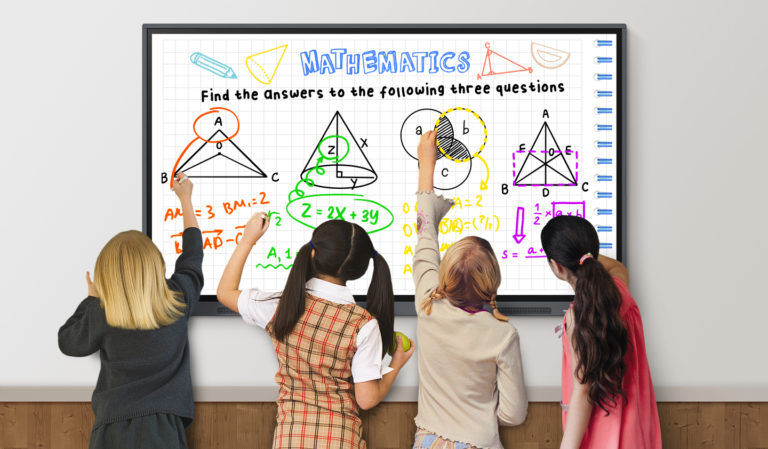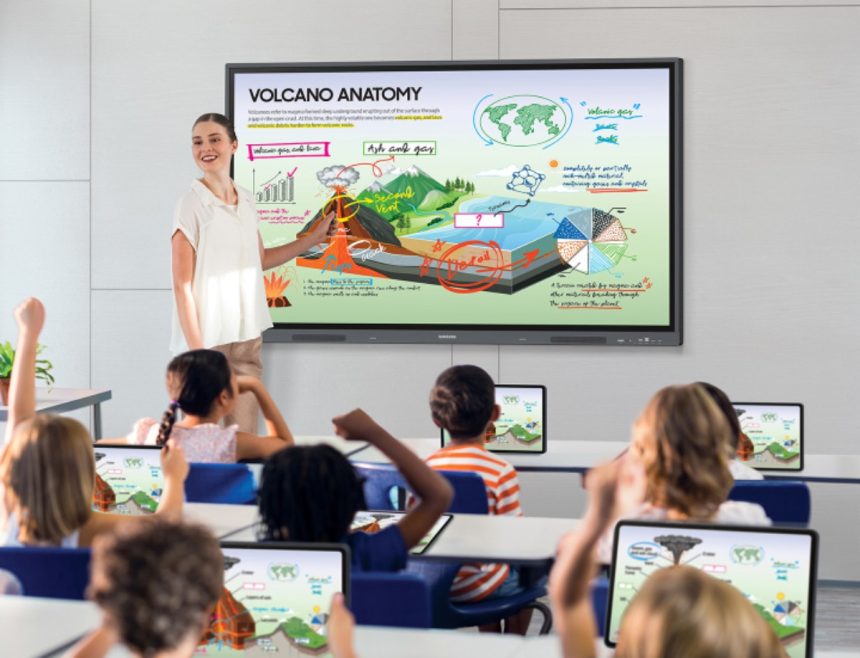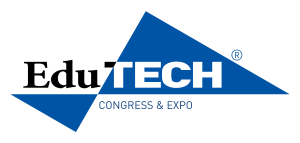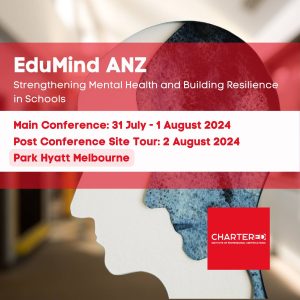From his prime position at the recent EduTech conference and expo, held in Melbourne between 24-25 August, Senior Director of Display and Brand Memory, Samsung Australia, Phil Gaut, moves around the company’s display stand and talks tech specs with a friendly fluency.
He’s explaining the international brand’s evolution into the education sector and how their early foray into the Australian space – working largely in the tertiary sector – has now broadened significantly to cater to both secondary and primary schools around the country.
“Our capability in that area has improved and there are new products that are really suitable,” he says.
It helps that, he says, “technology is becoming simpler and cheaper”.
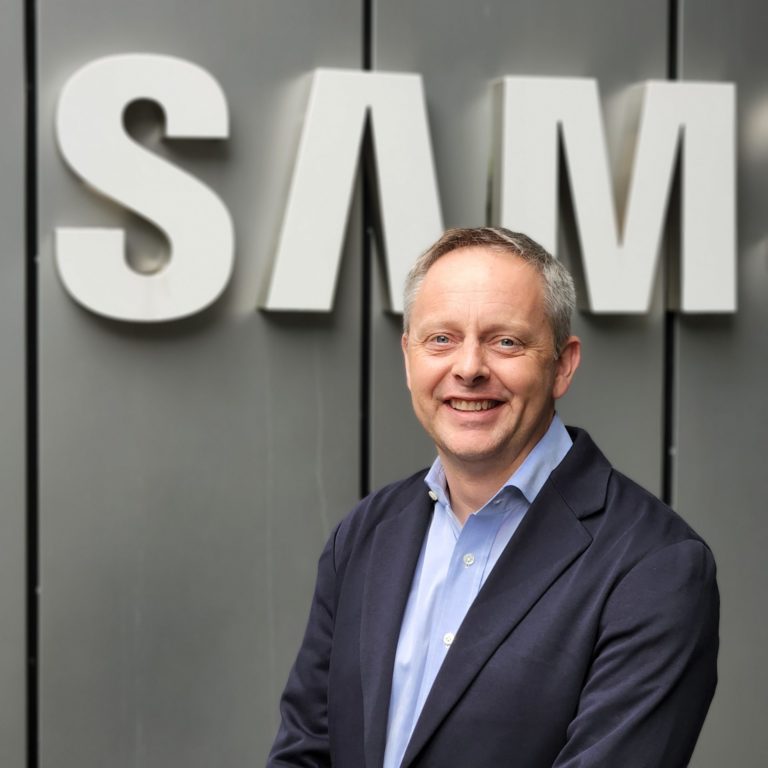
“Education is a cost-conscious environment and you need to show a real return for your money,” Mr Gaut told EducationDaily. “We have become more relevant in that space.”
Although the stand is dotted with electronic whiteboards, monitors, and tablets, the product that paved the way for their reach into the K-12 portion of the local education sector space – in Victoria, particularly – was thanks to COVID-19.
“In the last two years, we’ve sold more than $80 million of air purifiers to Victorian schools,” he says.
The groundwork that made that level of sales possible was an extensive amount of work with researchers at Queensland University of Technology (QUT), to establish the benefits of air purifiers in the classroom.
Within Victorian state schools, at least, the research findings, combined with the fact that air purifiers became mandatory in all government schools, helped establish Samsung’s air purification product a leader in the field.
Across the country, the number of air purification units sold by Samsung into Australian primary and secondary schools includes 124,850 from Victoria, 4100 from Queensland, 14,000 from Western Australia, 4500 from Tasmania and 500 from Northern Territory – a total of 147,950 units nationally.
“Since COVID, getting kids back into schools in the safest possible way has been really important,” Mr Gaut says. “Our product is very high-end air purification with built-in filters that kill 99.9 per cent of all viruses. The air purifiers are not intrusive or offensive in the classroom and they give teachers, students and their families peace of mind, knowing they are breathing air that is as clean as possible.”
Technology in all shapes and sizes
In primary schools – particularly kindergarten to grade three – Mr Gaut says tablet technology is a classroom favourite.
Electronic whiteboards are another key area of sought-after classroom technology.
He points to an impressive looking display model at the stand and tells me it’s a brand-new product for the Australian market – making its public debut at EduTech.
“It’s capable of the fastest latency – 45 milliseconds – and that speed of use is so important for teachers,” he says.
So is the speed of starting a lesson, he says. For teachers keen to engage, and hold the attention of their students, Mr Gaut says that Samsung’s technology ensures lessons can be started with just the touch of the whiteboard.
The product is a 75-inch Android 11 OS* based product, promising intuitive usability to teachers. It’s called the WAC, Mr Gaut says.
“We’re not very good at naming conventions,” he adds with a laugh.
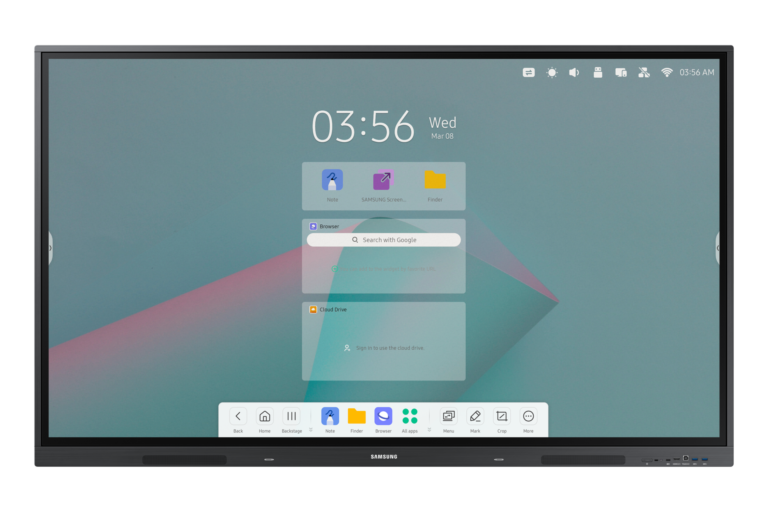
What they are good at, it seems, is connectivity.
“It’s got a super-fast screen, connectivity up to nine separate devices, sharing of up to four on screen at once, mirroring of technology, and the teacher has full control, whether one’s child’s content, or multiple children’s content can be up on the screen at the same time,” he says.
“Bringing children to the front of the classroom enables them to have a more engaged classroom, so this level of connectivity is really important for everyone.”
Making technology accessible
When it comes to technology in Australian classrooms, Mr Gaut, has one main nagging frustration.
“It’s when you see a load of tech at school that’s not utilised,” he told EducationDaily.
There are a couple of components that inspire his annoyance.
“It’s such a waste of money,” he says.
But, knowing it doesn’t have to be that way, is the main trigger for him.
With a small but expert team of trainers who can travel all over Australia to share their support and knowledge with school staff across Australia, Mr Gaut says there is no reason why any school that purchases a Samsung product should not be able to use it gain incredible value from the experience – as long as they’re prepared to follow the user-friendly instructions.
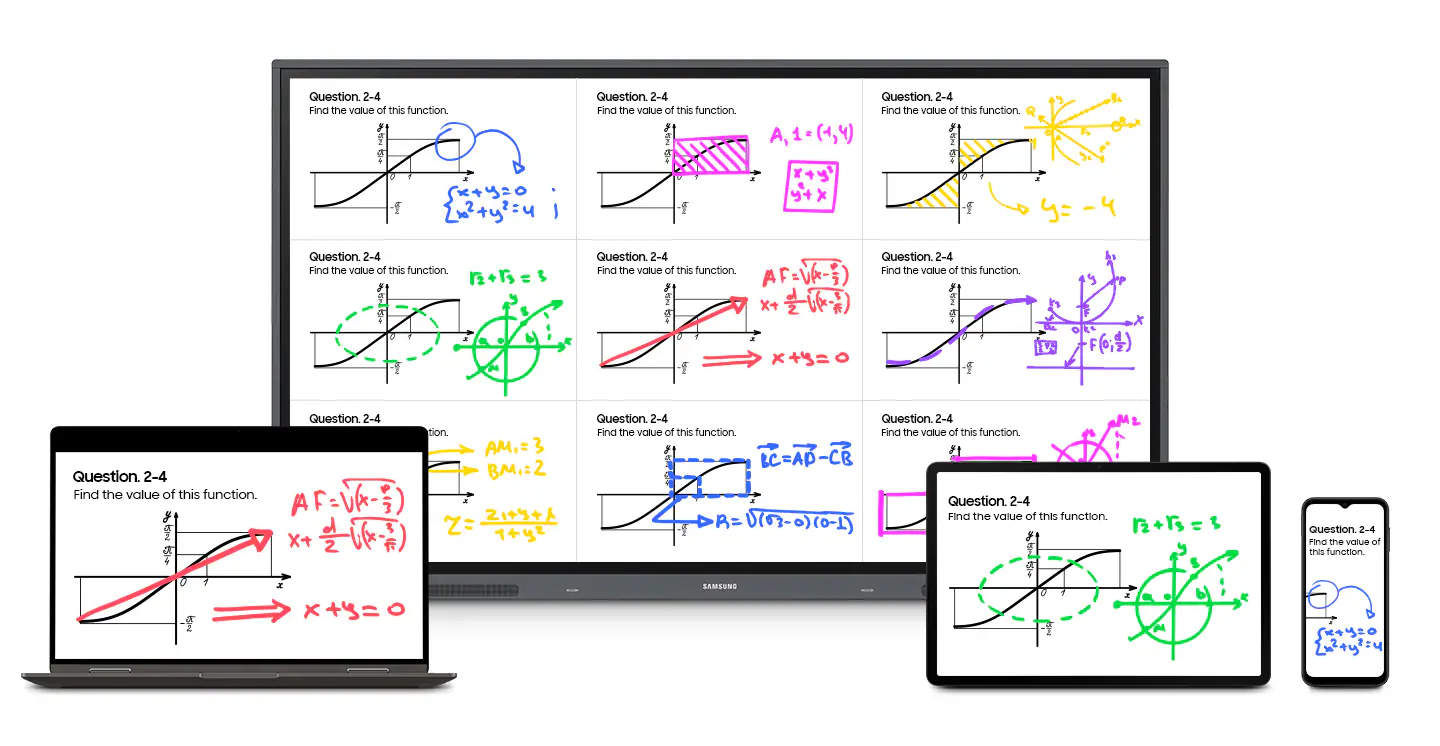
Depending on peak periods, he says Samsung can typically have both product and training of that product’s use delivered within a week.
Training can be bespoke and tailored to meet each school’s unique requirements, with short, sharp 30-minute sessions, or longer session times to cover things more comprehensively.
“We also provide a wealth of training material online,” he says.
This material includes, he told EducationDaily, “a heap” of small videos, just two – three minutes long, that deliver explanations to one topic at a time to make what Mr Gaut says is “content that’s accessible and as easy to use as possible”.
His message to educators, Mr Gaut told EducationDaily, is that education “should have the simplest technology available”
“My frustration is when you see a load of tech at a school that’s not utilised. I’ve seen post-it notes stuck to whiteboards, cables hanging out the back everywhere – and all sorts of things,” he says.
“It doesn’t add any value to either the student experience, or the teaching experience.”
By bringing that consumer ease-of-use people have become used to with Samsung devices in their home environments into the classroom setting, Mr Gaut says the new interactive WAC series display offers a dynamic, engaging experience designed for the classroom of the future.
“To gain the best possible results from technology in classrooms, we believe in keeping it as simple as possible.”
